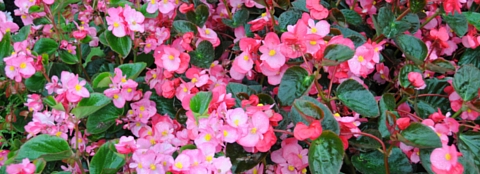July Southern Garden Checklist

Watering:
- Monitor plantings for moisture stress as the summer temperatures continue to climb. Make new plantings and moisture loving plants your highest priority. Always water thoroughly to encourage deep more drought-tolerant roots.
- Reduce your workload and conserve water by using soaker hoses or a drip irrigation system. You’ll use less water and reduce the risk of disease by applying the water directly to the soil instead of wetting the foliage.
Flower Care:
- Groom perennials as needed for a neater appearance or second flush of flowers. Fertilize with Milorganite® to speed their recovery.
- Don’t be alarmed if alyssum, French marigolds, lobelia and other heat sensitive annuals stop blooming during extremely hot weather. Water as needed and wait for cooler weather and blossoms to return.
- Make note of hot spots in the garden. Next year use heat and drought tolerant plants such as zinnia, moss rose, gazania, cosmos, sunflower and cleome in those areas of your garden.
Vegetable Garden Planting and Harvest:
- Warmer temperatures speed ripening so monitor and harvest vegetables regularly for the best flavor and greatest productivity.
- Plan and plant vegetables for a fall harvest. Prepare the soil by adding compost and Milorganite as needed. Your local extension service can provide best planting dates for your area.
Pest and Disease Control:
- Remove and destroy bagworms with a pair of garden scissors or sharp knife from trees and shrubs.
- Continue to monitor for pests like Japanese beetles, aphids and mites. Hand pick small populations and look for other eco-friendly methods and products to manage damaging populations.
- Aster yellows can cause green petals, distorted leaves and misshapen flowers on many plants. Remove infected plants as soon as you find them to reduce the risk to nearby healthy plants. Control aphids and leafhoppers feeding on the plants to prevent the spread of this disease.
- Monitor crapemyrtles and other susceptible shrubs for powdery mildew. Look for a white powdery substance on the leaves. Infected plants will survive, but their appearance declines as the season progresses. Reduce problems by increasing the light and air circulation with proper pruning. Select mildew resistant cultivars for future plantings.

